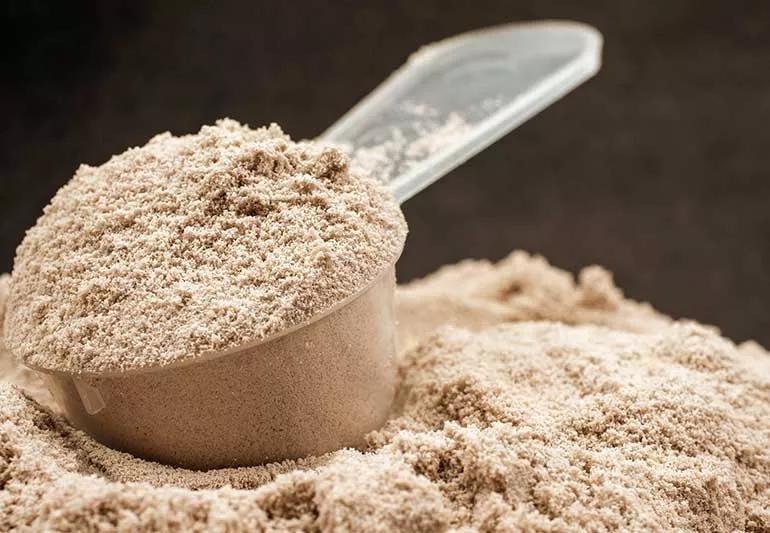It’s nutritious, offers fiber, antioxidants and protein, and is good for food sensitivities

“Protein” probably isn’t the first thing that comes to mind when you think of brown rice. Most people think of brown rice as a carb (although a healthy one). But you might be surprised to learn that brown rice is more than just a whole grain. It also has a significant amount of protein.
Advertisement
Cleveland Clinic is a non-profit academic medical center. Advertising on our site helps support our mission. We do not endorse non-Cleveland Clinic products or services. Policy
Brown rice protein powder isn’t as well-known as whey, soy, casein or even pea protein powder, but it offers some notable benefits. “And it’s a good option if you have food allergies or can’t tolerate other types of protein powder,” says registered dietitian Kayla Kopp, RD, LD.
One cup of cooked brown rice has about 5.5 grams of protein. That’s about 10% of the protein a healthy adult weighing about 140 pounds should eat daily, according to the U.S. Department of Agriculture (USDA).
A complete protein supplies all nine essential amino acids, the building blocks of proteins. Your body can’t make these amino acids. They’re called “essential” because you must get them from food.
The protein in brown rice isn’t a complete protein because it doesn’t provide all the essential amino acids. But Kopp says that as long as you eat a variety of healthy foods, you should get enough of the nine essential amino acids.
So, is brown rice protein powder as good as alternatives when it comes to amino acid content? Yes, according to a study comparing brown rice, soy and whey proteins. The researchers analyzed the amino acids each protein provided. They found that brown rice protein is an acceptable substitute for soy or whey protein.
Advertisement
So, what does brown rice protein have to offer? Here are some of its benefits:
There aren’t any known harmful side effects of brown rice protein. “However, a diet with too much protein can be harmful in some cases,” notes Kopp.
This is because eating too much protein over the long term can actually damage your kidneys. The recommended daily protein intake is 0.8 to 1 gram of protein per 1 kilogram (about 2.2 pounds) of body weight. If you weigh 165 pounds (75 kilos), that’s about 60 to 75 grams of protein. If you’re active or trying to build muscle, you may want to eat a bit more than this. You can work with a registered dietitian to determine your specific protein needs.
Trying to decide between brown rice protein and pea protein? Here are some things you may want to consider:
Advertisement
Other protein powder options include:
Protein powders provide a quick, convenient way to get a nutrition boost, says Kopp. There are endless ways to customize them in tasty smoothies. Just blend the powder of your choice with a combination of fruits, veggies, yogurt, nuts, seeds or spices.
Advertisement
Learn more about our editorial process.
Advertisement

Edamame, lentils and chicken breast are good sources of protein

Too much sodium can cause high blood pressure and increase your risk of heart disease

Eating too much salt can put extra pressure on your blood vessels and heart

High in antioxidants and vitamin C, kohlrabi lowers disease risk, protects your heart and aids digestion

The gluten-free, fiber-rich superfood supports gut and heart health and can help with diabetes management

Wasabi root may protect against cancer, food poisoning and memory loss

Limes and lime juice are rich in vitamins, minerals, antioxidants and other nutrients

This herbal drink may ease allergies and boost prostate health

Start having sex about 72 hours before ovulation, then at least every other day during your fertile window

Attachment theory suggests that your earliest relationships shape connections throughout your life

It isn’t a recognized mental health disorder, but research shows that problematic social media use can negatively affect your mental health, self-esteem and sleep